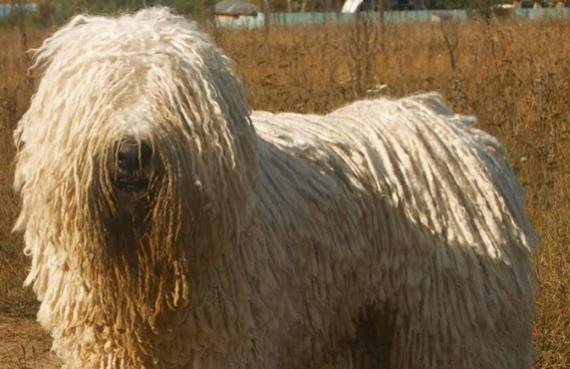
El komondor It is a dog very similar to the Puli, as both have a similar physiognomy, and with the characteristic Rastafarian coat. However, this breed is much larger, and has some significant differences. If you want to know more about the woolly dog, do not miss what we tell you.
The race komondor has been used as hungarian shepherd dog, and it is said that its origins could actually be in Asia. Its appearance attracts a lot of attention, and allows it to camouflage itself among the sheep, something that may explain its development over the centuries. At present, it is not very well known, as neither is the Puli, hence there is confusion to distinguish them.
The coat of the Komondor is very similar to that of the Puli, with long cords that usually reach the ground, and with a thinner and woolly coat on the inside. However, the Komondor only has the Ivory color, while the Puli can be black or brown. In addition, the size is different, since the Komondor is a large breed, which can weigh 50 or 60 kilos.
The Komondor has its own characteristics, making it suitable only for certain people. It is dominant with other dogs, independent and a great guard dog. He has a good relationship with children, being cold to strangers. It needs a firm and energetic owner, who makes it sociable and obedient.
Another detail you should know about this dog is that it has a great energy, since it was always a working dog. It is necessary that you live outdoors or that you walk a lot, so it is not suitable for closed spaces. In addition, it is prone to skin infections, due to its dense coat, so it must be controlled. Another condition that they can suffer from is hip dysplasia, but they are usually quite healthy dogs.
More information - Rastafarian Dog: Puli
Image - Wikipedia
thanks for solving my doubts 🙂